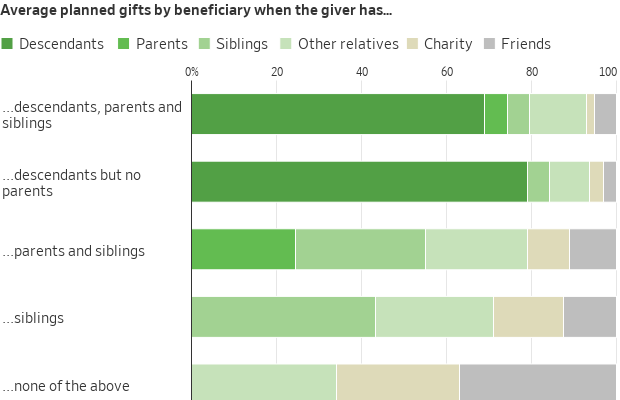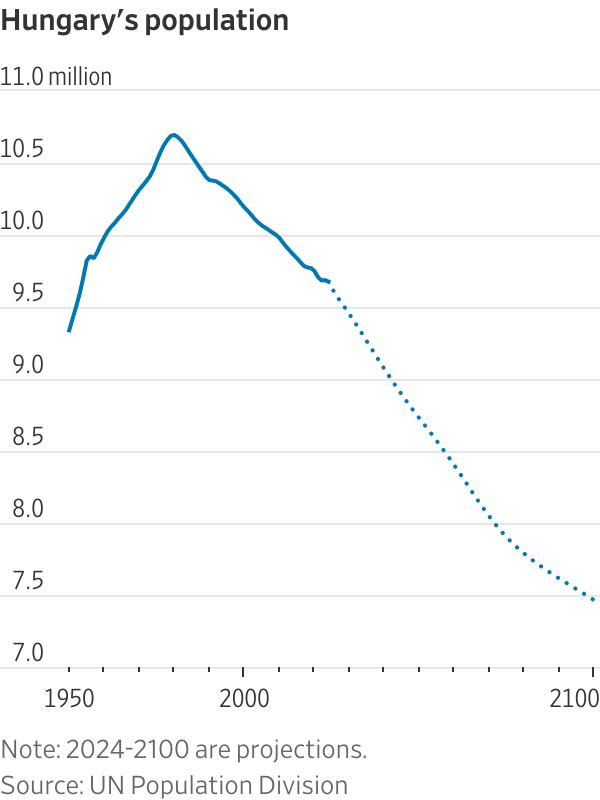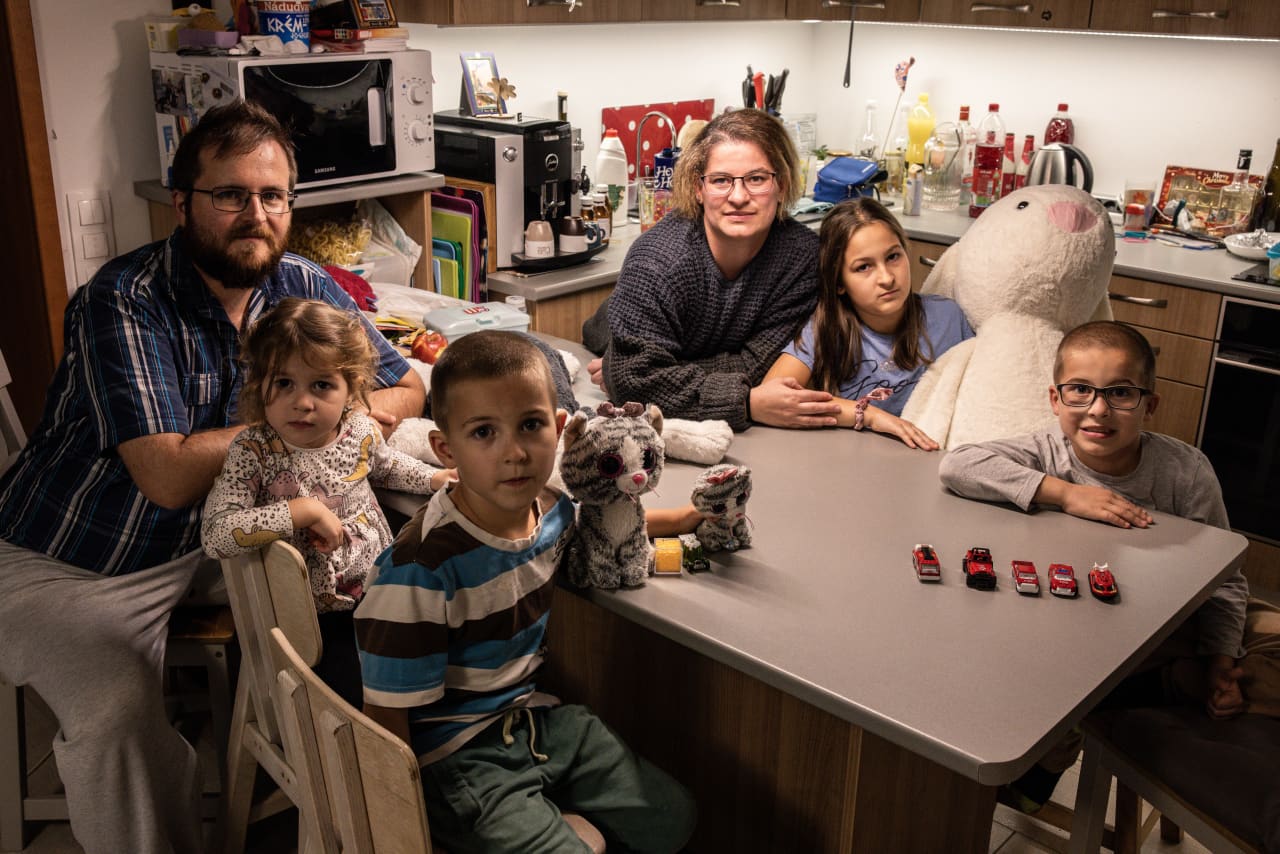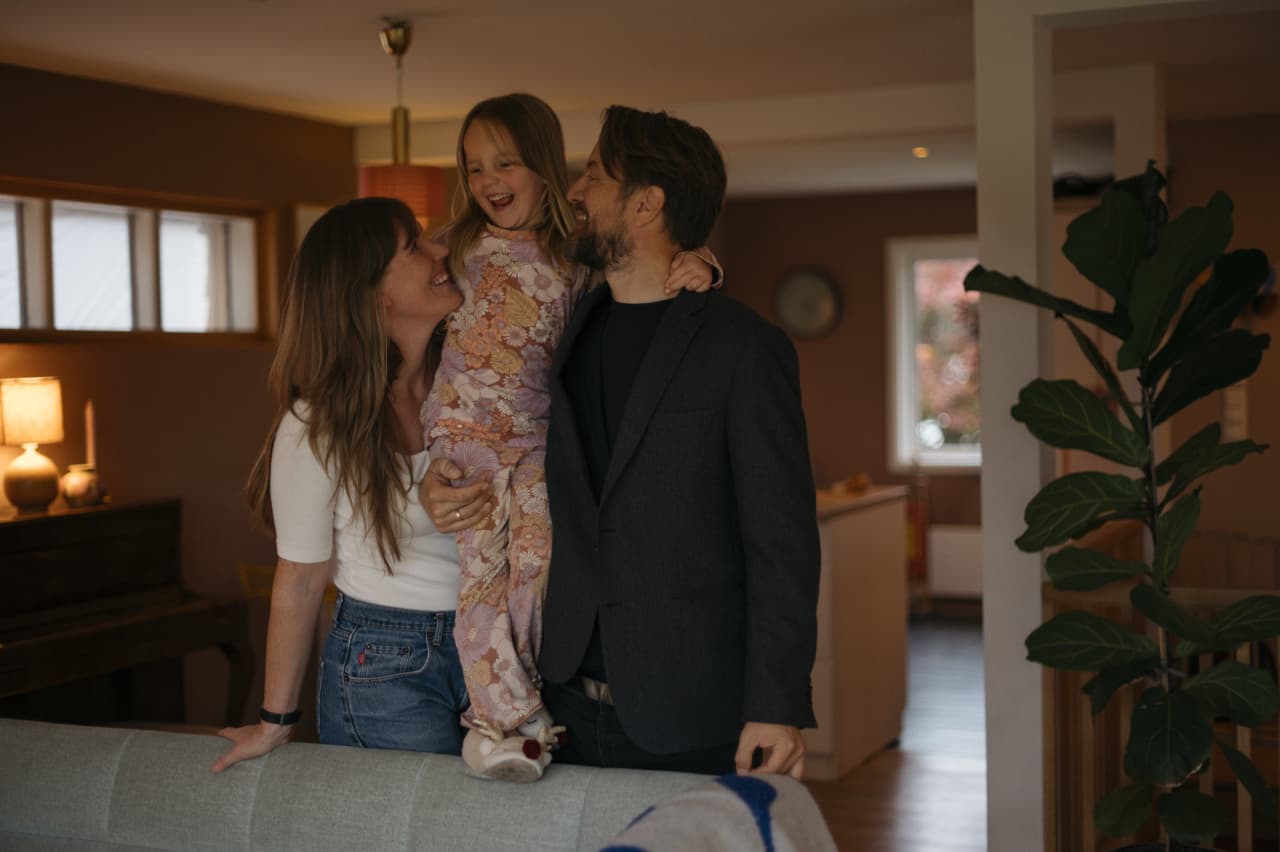People Without Kids Are Leaving Money to Surprised Heirs
The bequests benefit charities, distant relatives and even pets
The bequests benefit charities, distant relatives and even pets
Charities, distant relatives and even pets are benefiting from surprise inheritances. They can thank people without children.
Not having children is becoming more common, both among millennials and older people. A July Pew Research Center analysis found that 20% of U.S. adults age 50 and older hadn’t had children.
And many of these people don’t have wills. An AARP survey found half of childless people age 50-plus who live alone have a will, compared with 57% of others that age. Those without wills have less control over what happens to their money, which often ends up in the hands of people who don’t expect it.
This phenomenon of a surprise inheritance is common enough that it has a name: the laughing heir .
“All they do is get the money and go, ‘Ah ha ha, look at that,’ ” said Michael Ettinger , an estate lawyer in New York.
Kelley Gilpin McKeig, a 64-year-old healthcare-industry consultant in Ridgefield, Wash., received a phone call several years ago saying her cousin Nick Caldwell left behind money in a savings account. They hadn’t been in touch for 20 years.
“I thought it was a scam,” she said. “Nobody else in our family had heard that he had passed.”
She hunted down his death certificate and a news article and learned he had died about a year and a half before in a workplace accident.
Caldwell, who was in his 50s, had died without a will. His estate was split among cousins and an uncle. It took about two years for the money to be distributed because of the paperwork and court approval involved. Gilpin McKeig’s share was $2,300.
Afterward, she updated her will to make sure what she has doesn’t go to “just anybody down the line, or cousins I don’t care about.”
There are trillions of dollars at stake as baby boomers age.
Most people leave their money to spouses and children when they die. A 2021 analysis of Federal Reserve survey data found that 82% of heirs’ inheritances came from parents.

People with no children say they want to leave a greater share of their estates to charity, friends and extended family , according to research by two Yale law professors that surveyed 9,000 U.S. adults.
Rebecca Fornwalt, a 33-year-old writer, created a trust after landing a book deal. While her heirs are her parents, her backup heirs include her sister and about a half-dozen close friends. She set aside $15,000 for the care of each of her two dogs.
Susan Lassiter-Lyons , a financial coach in Florence, Ariz., said one childless client is leaving equal interests in her home to her two nephews. Another is leaving her home to a man she has been friends with for a long time.
“She broke his heart years ago and she feels guilted into leaving him property,” Lassiter-Lyons said.
A client who is a former escort estranged from her family is leaving her estate to two friends and to charity.
Lassiter-Lyons, who doesn’t have children, set up a trust for her two dogs should she and her wife die. The pet guardian, her wife’s sister, would live in their house while taking care of the dogs. When the dogs die, she inherits the house.
In the Yale study, people without descendants—children or grandchildren—intended to give 10% of their estates to charity, on average, more than triple the intended amount of those with descendants.
The Jewish Community Foundation of Los Angeles, which manages $1.3 billion of assets, a few years ago added an “heirless donors” section to its website that profiles donors and talks about building a legacy.
“Fifteen years ago, we never talked about child-free donors at all,” said Lew Groner , the foundation’s vice president for marketing.
In the absence of a will, heirs are determined by state law . Assets can wind up in the state’s hands. In New York, for example, $240 million in unclaimed funds over the past 10 years has arrived from estates of the deceased, not including real estate, according to the state comptroller’s office. In California, it is $54.3 million.
Financial advisers say a far bigger concern than who gets what is making sure there is enough money and support for a comfortable old age, because clients without children can’t call on them for help.
“I hope there is something left to leave,” said Stephanie Maxfield, a 43-year-old therapist in southern Colorado. “But if there isn’t, I think that’s OK, too.”
She said she would like to leave something to her partner’s nieces and nephews, as well as animal shelters and domestic-violence shelters. Her best friend is a beneficiary.
Choosing an estate executor and who would handle money and health decisions on your behalf can be difficult when you don’t have children, financial advisers say. Using a promised inheritance as a reward for taking care of you when you are older isn’t a good solution, said Jay Zigmont , an investment adviser focused on childless people.
“Unfortunately, it is relatively common to see family members who are in the will decide to opt for cheaper medical care (or similar decisions) in order to protect what they will be inheriting,” he said in an email.
Kirsten Tompkins, who is from Birmingham, U.K., and works in consulting, along with her husband divided their estate among their dozen nieces and nephews.
Choosing heirs was the easy part. What is hard is figuring out whom to ask for help as she and her husband get older, she said.
“A lot of us are at an age where we are playing that role for our parents,” the 50-year-old said, referring to tasks such as providing tech support and taking parents to medical appointments. “Who is going to do that for us?”
 Copyright 2020, Dow Jones & Company, Inc. All Rights Reserved Worldwide. LEARN MORE
Copyright 2020, Dow Jones & Company, Inc. All Rights Reserved Worldwide. LEARN MORE
What a quarter-million dollars gets you in the western capital.
Alexandre de Betak and his wife are focusing on their most personal project yet.
Subsidised minivans, no income taxes: Countries have rolled out a range of benefits to encourage bigger families, with no luck
Imagine if having children came with more than $150,000 in cheap loans, a subsidised minivan and a lifetime exemption from income taxes.
Would people have more kids? The answer, it seems, is no.
These are among the benefits—along with cheap child care, extra vacation and free fertility treatments—that have been doled out to parents in different parts of Europe, a region at the forefront of the worldwide baby shortage. Europe’s overall population shrank during the pandemic and is on track to contract by about 40 million by 2050, according to United Nations statistics.
Birthrates have been falling across the developed world since the 1960s. But the decline hit Europe harder and faster than demographers expected—a foreshadowing of the sudden drop in the U.S. fertility rate in recent years.
Reversing the decline in birthrates has become a national priority among governments worldwide, including in China and Russia , where Vladimir Putin declared 2024 “the year of the family.” In the U.S., both Kamala Harris and Donald Trump have pledged to rethink the U.S.’s family policies . Harris wants to offer a $6,000 baby bonus. Trump has floated free in vitro fertilisation and tax deductions for parents.
Europe and other demographically challenged economies in Asia such as South Korea and Singapore have been pushing back against the demographic tide with lavish parental benefits for a generation. Yet falling fertility has persisted among nearly all age groups, incomes and education levels. Those who have many children often say they would have them even without the benefits. Those who don’t say the benefits don’t make enough of a difference.

Two European countries devote more resources to families than almost any other nation: Hungary and Norway. Despite their programs, they have fertility rates of 1.5 and 1.4 children for every woman, respectively—far below the replacement rate of 2.1, the level needed to keep the population steady. The U.S. fertility rate is 1.6.
Demographers suggest the reluctance to have kids is a fundamental cultural shift rather than a purely financial one.
“I used to say to myself, I’m too young. I have to finish my bachelor’s degree. I have to find a partner. Then suddenly I woke up and I was 28 years old, married, with a car and a house and a flexible job and there were no more excuses,” said Norwegian Nancy Lystad Herz. “Even though there are now no practical barriers, I realised that I don’t want children.”
Both Hungary and Norway spend more than 3% of GDP on their different approaches to promoting families—more than the amount they spend on their militaries, according to the Organization for Economic Cooperation and Development.
Hungary says in recent years its spending on policies for families has exceeded 5% of GDP. The U.S. spends around 1% of GDP on family support through child tax credits and programs aimed at low-income Americans.
Hungary’s subsidised housing loan program has helped almost 250,000 families buy or upgrade their homes, the government says. Orsolya Kocsis, a 28-year-old working in human resources, knows having kids would help her and her husband buy a larger house in Budapest, but it isn’t enough to change her mind about not wanting children.
“If we were to say we’ll have two kids, we could basically buy a new house tomorrow,” she said. “But morally, I would not feel right having brought a life into this world to buy a house.”
Promoting baby-making, known as pro natalism, is a key plank of Prime Minister Viktor Orbán ’s broader populist agenda . Hungary’s biennial Budapest Demographic Summit has become a meeting ground for prominent conservative politicians and thinkers. Former Fox News anchor Tucker Carlson and JD Vance, Trump’s vice president pick, have lauded Orbán’s family policies.
Orbán portrays having children inside what he has called a “traditional” family model as a national duty, as well as an alternative to immigration for growing the population. The benefits for child-rearing in Hungary are mostly reserved for married, heterosexual, middle-class couples. Couples who divorce lose subsidised interest rates and in some cases have to pay back the support.
Hungary’s population, now less than 10 million, has been shrinking since the 1980s. The country is about the size of Indiana.

“Because there are so few of us, there’s always this fear that we are disappearing,” said Zsuzsanna Szelényi, program director at the CEU Democracy Institute and author of a book on Orbán.
Hungary’s fertility rate collapsed after the fall of the Soviet Union and by 2010 was down to 1.25 children for every woman. Orbán, a father of five, and his Fidesz party swept back into power that year after being ousted in the early 2000s. He expanded the family support system over the next decade.
Hungary’s fertility rate rose to 1.6 children for every woman in 2021. Ivett Szalma, an associate professor at Corvinus University of Budapest, said that like in many other countries, women in Hungary who had delayed having children after the global financial crisis were finally catching up.
Then progress stalled. Hungary’s fertility rate has fallen for the past two years. Around 51,500 babies have been born there this year through August, a 10% drop compared with the same period last year. Many Hungarian women cite underfunded public health and education systems and difficulties balancing work and family as part of their hesitation to have more children.
Anna Nagy, a 35-year-old former lawyer, had her son in January 2021. She received a loan of about $27,300 that she didn’t have to start paying back until he turned 3. Nagy had left her job before getting pregnant but still received government-funded maternity payments, equal to 70% of her former salary, for the first two years and a smaller amount for a third year.
She used to think she wanted two or three kids, but now only wants one. She is frustrated at the implication that demographic challenges are her responsibility to solve. Economists point to increased immigration and a higher retirement age as other offsets to the financial strains on government budgets from a declining population.
“It’s not our duty as Hungarian women to keep the nation alive,” she said.
Hungary is especially generous to families who have several children, or who give birth at younger ages. Last year, the government announced it would restrict the loan program used by Nagy to women under 30. Families who pledge to have three or more children can get more than $150,000 in subsidised loans. Other benefits include a lifetime exemption from personal taxes for mothers with four or more kids, and up to seven extra annual vacation days for both parents.
Under another program that’s now expired, nearly 30,000 families used a subsidy to buy a minivan, the government said.
Critics of Hungary’s family policies say the money is wasted on people who would have had large families anyway. The government has also been criticised for excluding groups such as the minority Roma population and poorer Hungarians. Bank accounts, credit histories and a steady employment history are required for many of the incentives.
Orbán’s press office didn’t respond to requests for comment. Tünde Fűrész, head of a government-backed demographic research institute, disagreed that the policies are exclusionary and said the loans were used more heavily in economically depressed areas.

Government programs weren’t a determining factor for Eszter Gerencsér, 37, who said she and her husband always wanted a big family. They have four children, ages 3 to 10.
They received about $62,800 in low-interest loans through government programs and $35,500 in grants. They used the money to buy and renovate a house outside of Budapest. After she had her fourth child, the government forgave $11,000 of the debt. Her family receives a monthly payment of about $40 a month for each child.
Most Hungarian women stay home with their children until they turn 2, after which maternity payments are reduced. Publicly run nurseries are free for large families like hers. Gerencsér worked on and off between her pregnancies and returned full-time to work, in a civil-service job, earlier this year.
She still thinks Hungarian society is stacked against mothers and said she struggled to find a job because employers worried she would have to take lots of time off.
The country’s international reputation as family-friendly is “what you call good marketing,” she said.

Norway has been incentivising births for decades with generous parental leave and subsidised child care. New parents in Norway can share nearly a year of fully paid leave, or around 14 months at 80% pay. More than three months are reserved for fathers to encourage more equal caregiving. Mothers are entitled to take at least an hour at work to breast-feed or pump.
The government’s goal has never been explicitly to encourage people to have more children, but instead to make it easier for women to balance careers and children, said Trude Lappegard, a professor who researches demography at the University of Oslo. Norway doesn’t restrict benefits for unmarried parents or same-sex couples.
Its fertility rate of 1.4 children per woman has steadily fallen from nearly 2 in 2009. Unlike Hungary, Norway’s population is still growing for now, due mostly to immigration.
“It is difficult to say why the population is having fewer children,” Kjersti Toppe, the Norwegian Minister of Children and Families, said in an email. She said the government has increased monthly payments for parents and has formed a committee to investigate the baby bust and ways to reverse it.
More women in Norway are childless or have only one kid. The percentage of 45-year-old women with three or more children fell to 27.5% last year from 33% in 2010. Women are also waiting longer to have children—the average age at which women had their first child reached 30.3 last year. The global surge in housing costs and a longer timeline for getting established in careers likely plays a role, researchers say. Older first-time mothers can face obstacles: Women 35 and older are at higher risk of infertility and pregnancy complications.
Gina Ekholt, 39, said the government’s policies have helped offset much of the costs of having a child and allowed her to maintain her career as a senior adviser at the nonprofit Save the Children Norway. She had her daughter at age 34 after a round of state-subsidised IVF that cost about $1,600. She wanted to have more children but can’t because of fertility issues.
She receives a monthly stipend of about $160 a month, almost fully offsetting a $190 monthly nursery fee.
“On the economy side, it hasn’t made a bump. What’s been difficult for me is trying to have another kid,” she said. “The notion that we should have more kids, and you’re very selfish if you have only had one…those are the things that took a toll on me.”
Her friend Ewa Sapieżyńska, a 44-year-old Polish-Norwegian writer and social scientist with one son, has helped her see the upside of the one-child lifestyle. “For me, the decision is not about money. It’s about my life,” she said.